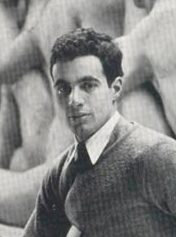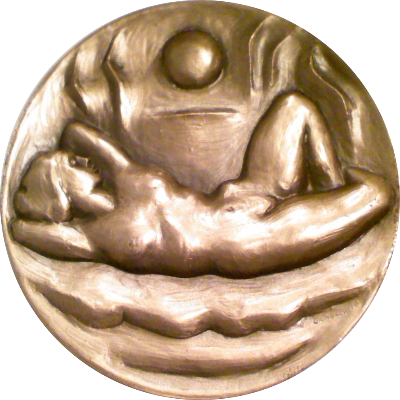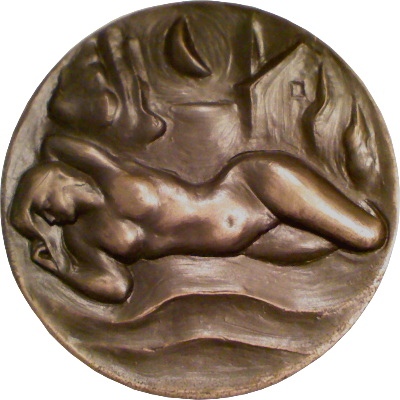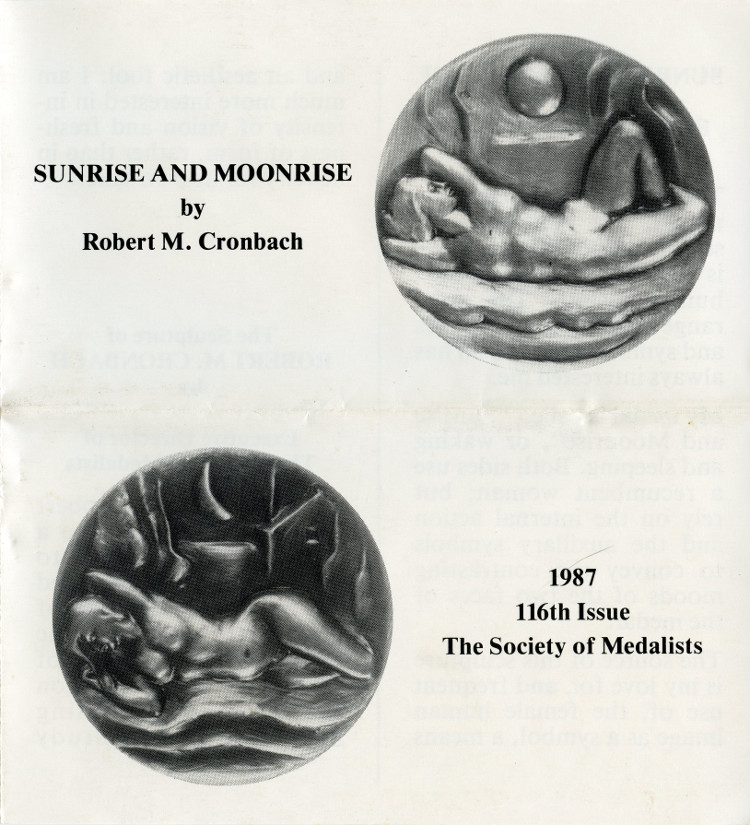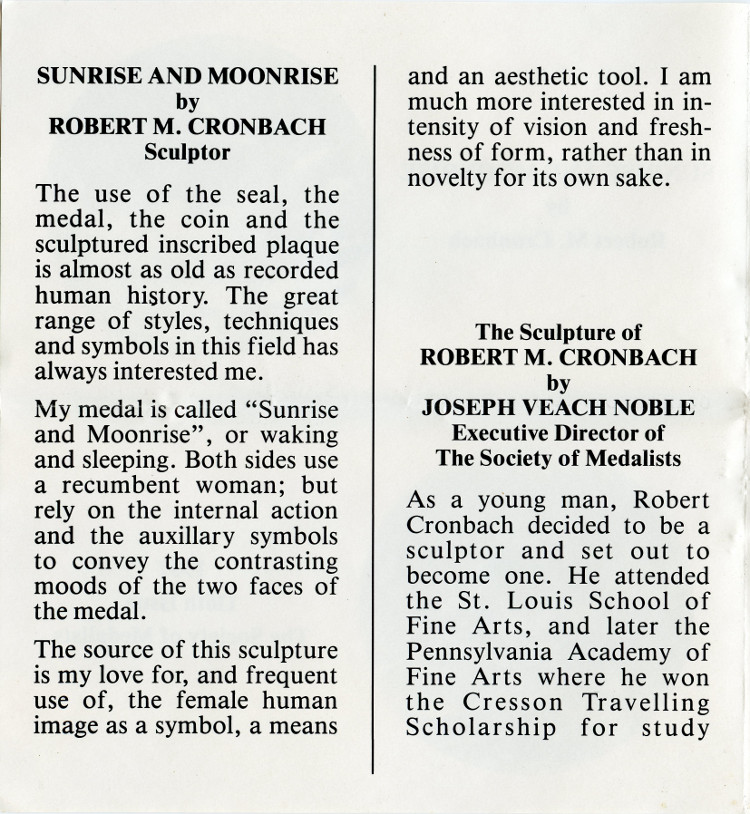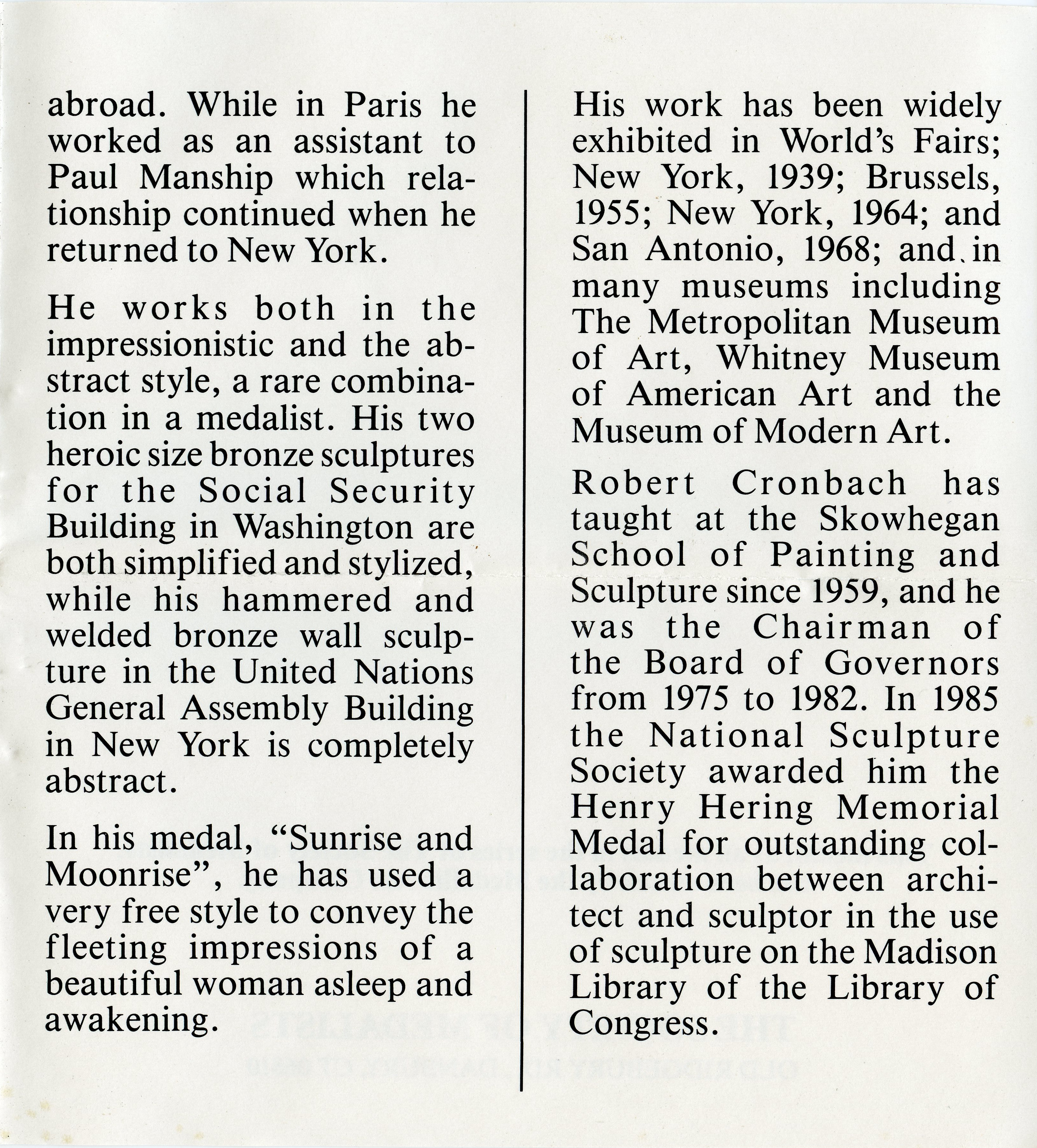Robert Cronbach was born in St. Louis and studied sculpture at the St. Louis School of Fine Arts and the Pennsylvania Academy of Fine Arts. In 1930 he worked as an assistant to the sculptor Paul Manship.
The Depression years found Cronbach working on WPA/FAP projects. While he came from a well-to-do background, he had to work for a living and the New Deal Art Projects were one of the few sources of employment for young artists. He was 31 years old when he was awarded the task of creating architectural sculptures for a federal housing project in Buffalo. He had been hired by the WPA (Works Progress Administration) in 1936 and was on loan to the FAP (Fine Arts Project) for the Willert Park project. The weekly salary for artists in the New York City program of the FAP was $23.50 per week, the highest in the nation.
Cronbach remembers these years in a memoir:
One must remember that the WPA/FAP was subjected to continual violent political attack. This was one of the major factors in the whole scene. As a result of these attacks, the minority of non-relief artists in all media was constantly whittled down. By the end of 1938 very few non-relief artists remained on the Project. Some qualified for relief–this was still the Depression. I was kept on because of a special situation. The Project had an opportunity to make some sculpture for the Willert Park housing project, which was a United States Housing Authority-assisted program in Buffalo. The sculptor would have to be self-supervised as the Buffalo WPA/FAP was not staffed or equipped to handle this work. I was offered the job and accepted. For this reason I was kept on the sculpture division until the job was finished. I returned to New York during the summer of 1939.
In the Willert Park situation the phrase "self-supervised" was no empty label. I planned the sculpture with an architect, found a suitable vacant city-owned building and arranged for its use as a studio, worked out the casting and installation procedures for the tamped concrete sculpture with the concrete contractors who were working on the housing project, and brought a fellow Project sculptor, Harold Ambellan, from New York to join me in carrying out the work. Naturally, the New York City Project had to approve all the important esthetic or procedural decisions, but except for the initial sketches this was done at a distance an rather infrequently.
Like many of his artist friends, Cronbach was a political activist who was heavily involved in artist and union organizing. His commissioned works reflected his beliefs and frequently included working people presented in conjunction with elements of city life.
Cronbach had his first solo show at the Hudson Walker Gallery in New York in 1940 and exhibited for many years with the Bertha Shaefer Gallery. World War II interrupted his artistic career as he served in the Merchant Marine. After the war he taught at Adelphi College in Garden City, NY from 1947 to 1961 and was also an instructor at the Skowhegan School of Painting and Sculpture in Maine, serving as chairman of the school's board of governers from 1975 to 1982.
His later commissions included sculptures and fountains at the United Nations General Assembly Building and the Fashion Institute of Technology and the Federal Office Building in St. Louis.
Cronbach spent the last years of his life in San Miguel de Allende, Mexico, where he died in 2001. He was survived by the children of his first wife, Maxine Silver Cronbach, who died in 1983: his daughter, Paula Maria Espinosa, and his sons Michael and Lee. He was also survived by four grandchildren and his wife, Anne Heathers Cronbach.
Sourced mainly from Western New York Heritage site.
